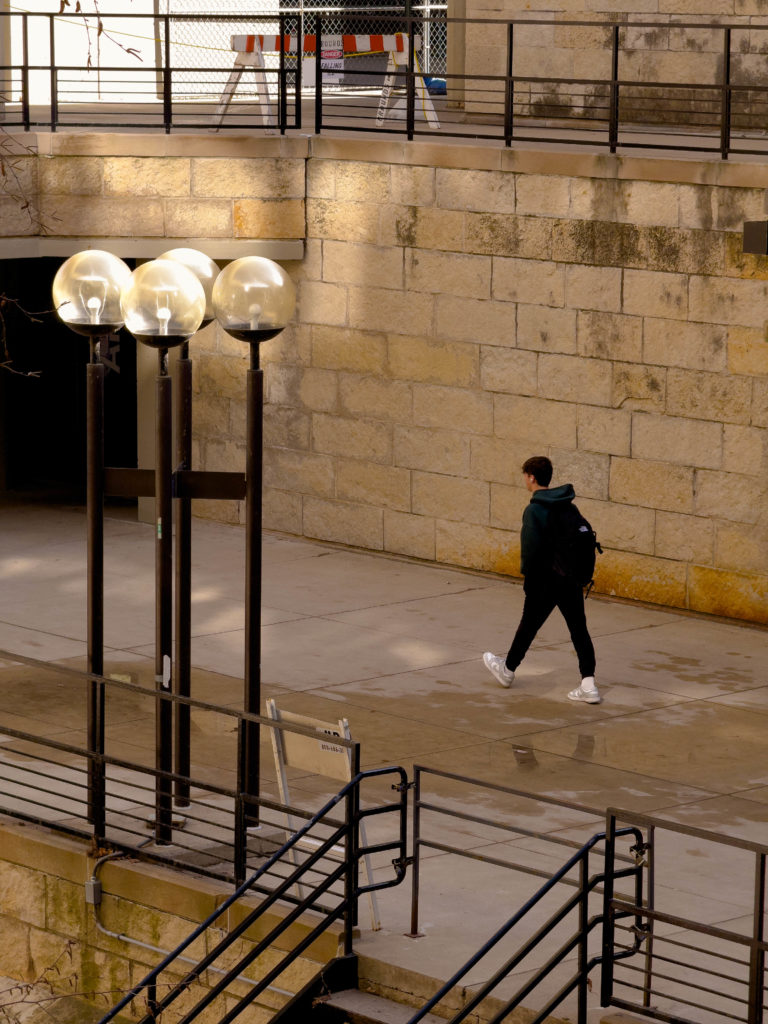Was the George L. Mosse Humanities Building built to serve as an impenetrable bunker amid wartime, or is there more to the story?
Anyone walking past the corner of State and N. Park St. is sure to notice the George L. Mosse and wonder what inspired the design of this striking, concrete-block fortress. The Humanities building has been a topic of campus lore for decades.
Since the building’s conception in the 1960s, the public has speculated about the origins of the building’s design. At seven stories tall, the building contains more than 30,000 square feet of classrooms and three academic departments. The building exhibits a classic Brutalist architectural style, characterized by a blocky appearance and made mostly of concrete.
One of the most famous tales about the building is that the massive concrete structure served as a bunker to protect the campus against bombing attacks and protests during the Cold War and the Vietnam War.
This theory gained popularity due to the politically active environment of the university, with many UW-Madison students and faculty advocating valiantly for an end to these wars. Members of the campus community staged numerous protests across campus to advocate for civil rights issues.

“[The 1960s and early 1970s hosted] a notable three years of hot protests against the Vietnam War and violence enacted upon students by the National Guard and police,” explains Troy Reeves, Oral History Association Vice President and Head of Oral History at UW-Madison.
The protests were intersectional, fighting for justice on more than one issue simultaneously. One issue was the overrepresentation of black men enlisted to serve in the Vietnam War, which led to the revolutionary Black Student Strike of 1969. Eventually, one of the most memorable political events of the period took place at Sterling Hall on August 24, 1970.
“[The Sterling Hall bombing] was the largest act of domestic terrorism in the country until the 1990s,” Reeves shares.
The bombing, intended to be a victimless act, protested UW-Madison’s affiliation with the Vietnam War by destroying the Army Mathematics Research Center in Sterling Hall. Tragically, the bombing claimed one life and injured several others. The Sterling Hall bombing left an impact on the community and culture at UW-Madison, eventually manifesting as a core moment in history for the Mosse Humanities Building.
However, most of the folklore about the Humanities Building’s origin is just that – lore. The most consistent and accurate explanation for the lack of beauty and refinement of the building is accredited to the project’s lack of funds.

“[The Mosse Humanities Building architects] aimed to build something as big and as cheap as possible,” remarks Reeves.
“[The Mosse Humanities Building architects] aimed to build something as big and as cheap as possible”
Troy Reeves
Furthermore, the building had to undergo even more constraints than planned, stripping the design to the basics. The original design included details such as colorful plaster to cover bare concrete, carpeted floors, and stone archways. Eventually, these architectural adornments that would have elevated Mosse Humanities were omitted to achieve the 10-million-dollar budget for the building.
Even though the truth disagrees with the stories about the history of the Humanities Building, this kernel of folklore remains alive for future classes to enjoy. Hopefully, future students will continue to delve into UW-Madison’s rich history and learn about the true origins of campus legends!

3 replies on “ Uncovering the Truth about the Infamous Humanities Building”
Wow this is great! So interesting!
Thank you very much! I’m glad you enjoyed the article.
So cool! I never knew!